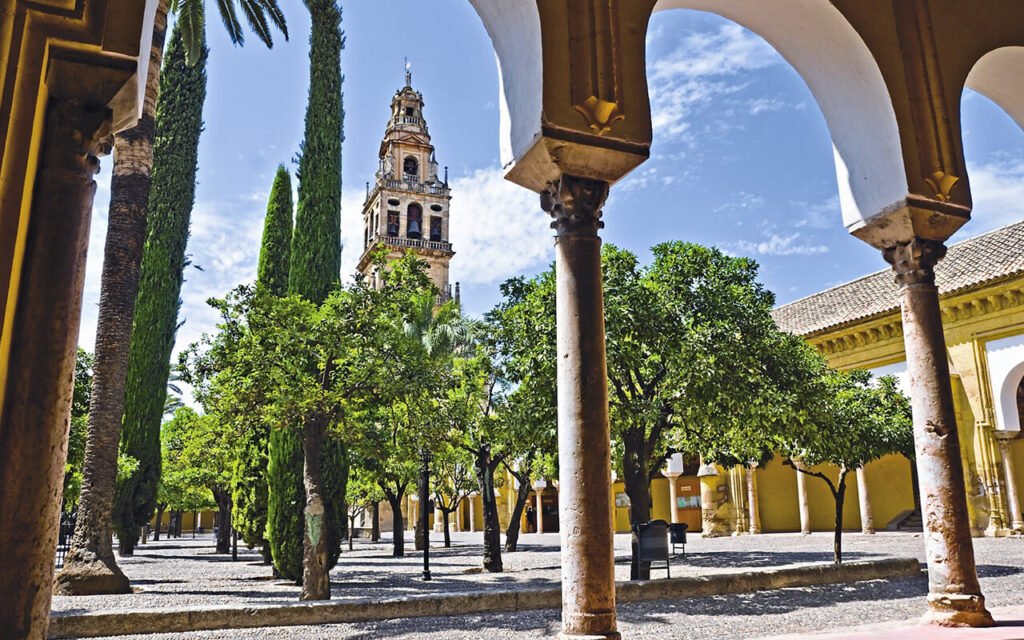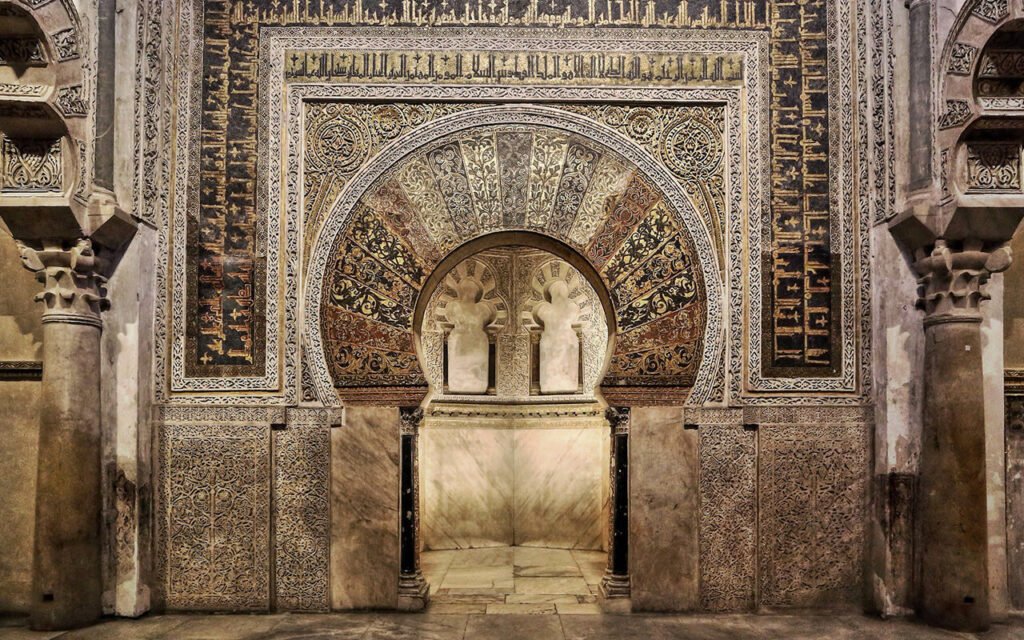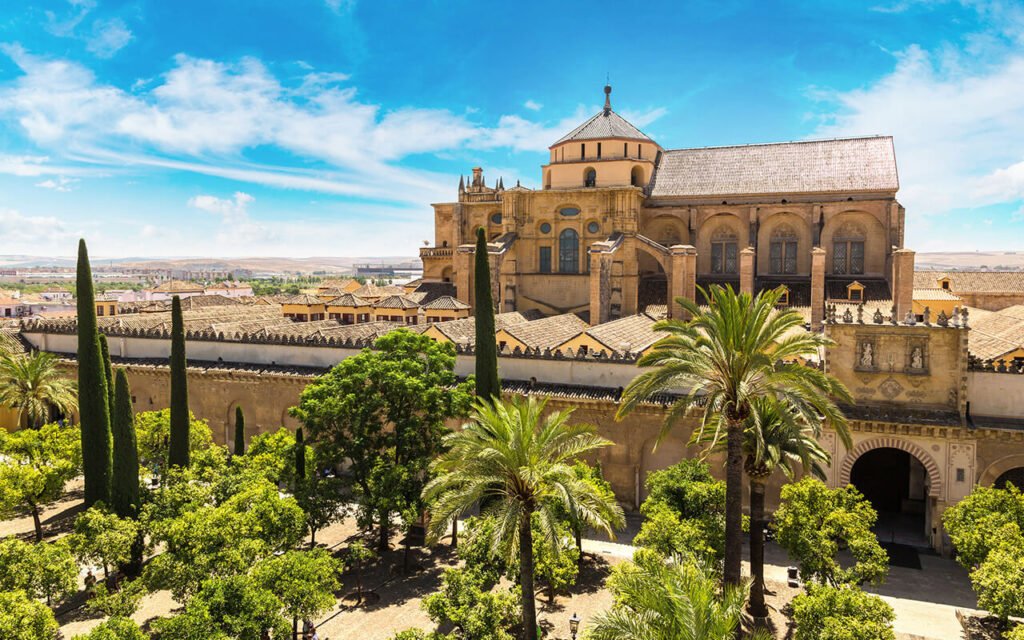Índice Contenido
The Mosque-Cathedral of Cordoba is the monument par excellence of the city of Cordoba. Its antiquity, its unique history and its unique architectural style, make it more than special, getting in 1984 to be a World Heritage Site by Unesco. Its history stretches over 13 centuries, serving as a place of worship for Visigoths, Muslims and Christians.
This mosque faithfully represents the passage of the Umayyads through the peninsula, where it is also a place of union between different cultures sculpted by the passage of time.
How to get to the Mosque of Cordoba
Location: Map of the place. To get to the Mosque of Cordoba in the city, you can choose between going by bus or on foot.
In case you want to get to the mosque of Cordoba by bus, you will have bus lines 3 and 16 that will leave you very close to the destination.
If you choose to go on foot, you will be able to enjoy the center of Cordoba in its fullness, as well as the Jewish quarter of Cordoba, being another great tourist attraction surrounding the mosque.
Parts that make up the Mosque-Cathedral of Cordoba
The parts of the Cordoba Mosque make it even more special. With different cultural styles and opposite purposes, it manages to have the necessary variety that every great monument needs. Its parts are:
The courtyard of the orange trees in the Mosque of Cordoba
The courtyard of orange trees is not the same as it was centuries ago. Muslims used it as a place to teach, to make judgments and as a meeting point with the sacred. This space of union between mosques, with vegetation and water, is key according to the Koran, since it is the transfer of paradise to earth.
This courtyard is divided into 3 parts, each with its own fountain or cistern. Among orange trees, palm trees, olive trees and cypresses, there is a unique scenery full of history.
The Prayer Room of the Mosque of Cordoba
The prayer hall of the mosque of Cordoba or also known as the forest of columns, is one of the most emblematic places inside the mosque. With about 1300 marble columns, it brings the essence of Roman and Byzantium traditions. In addition, it supports a total of 365 bicolor horseshoe arches. Some were created by and for the sanctuary, although others were collected from Roman and Visigothic ruins in the province of Cordoba.

Bell tower of the Mosque-Cathedral of Cordoba
Its construction dates back to the 10th century by Abderraman III. It was an essential tower that called the faithful to prayer to Allah. In its beginnings, it was decorated by four pairs of horseshoe arches with a dome, but with the Christian reconquest, it was reformed bringing touches of baroque essence getting a bell tower in the style of Christian churches.
The Haram is the Muslim prayer area. In the mosque of Cordoba, the Haram is a rectangular area full of columns in which the prayers are given. Its construction lasted more than 2 centuries, passing through the hands of several emirs. It began at the hand of Abd al-Rahman I, building 11 rows facing the Qiblah, which was oriented towards the south and not towards Mecca.
This bell tower of the mosque of Cordoba, measuring 54 meters, is the tallest building in the city.
Haram of the Mosque of Cordoba
Al-Hakam II carried out the most notable modification by demolishing the Qiblah and reusing its materials.
In the 11th century, with the conquest by Gregory IX, a part of the Haram was demolished and the cathedral was built, making it the first mosque-cathedral in the world.
The Arches of the Mosque of Cordoba
Its semicircular arches are a great tourist attraction that gives the mosque a very special personality. These arches are supported by columns and are spread throughout the interior of the building. Its materials are white stone and reddish brick.
It can be seen from the door of Las Palmas where the first arches were built. With the construction decided by the different emirs over time, it ended up giving the known forest of columns, with a total of 365 horseshoe arches, providing an iconic image that makes the mosque recognizable without any doubt.

Quibla of the Cordoba Mosque
One of the main walls, the Quibla, where the Mihrab opens, is a unique element in the mosque-cathedral of Cordoba because it is the only Quibla that is not oriented towards Mecca. It is believed to be built facing south due to the conflict between Umayyads and Abbasids, as a form of protest.
Mihrab of the Cordoba Mosque
The mihrab is the holiest place in the entire mosque. When accessing it, it is seen from the front, with an extremely careful and detailed style and decoration. Its function is to point the worshipper towards Mecca, but as we have seen above, in the case of the mosques of al-Andalus this is not the case due to the conflict between the Umayyads and the Abbasids. This projection space is a heptagonal room, with an octagonal plaster vault with a horseshoe arch. In its decoration one can appreciate inscriptions of verses of the Koran.
Villaviciosa Chapel
This primitive chapel was built in the skylight of Alhaken II. It was adapted to the new liturgy with the construction of a Gothic nave in 1489. This space of basilical plan is raised with a structure of pillars and sash arches, with a wooden gabled frame, hidden with the passage of time with 8 pointed windows, vaults and a rose window. In its beginnings, it showed paintings of Italian-Byzantine influence of kings and saints.
Sagrario Chapel
Founded in 1330 by the widow of Don Juan Ponce de Cabrera, the Sagrario Chapel was located in the southeast corner of the mosque, occupying the first three naves of the Almanzor extension.
This chapel is the oldest parish temple of the diocese of Cordoba, in charge of taking care of sacramental books dating back to 1520. In this chapel the catholic liturgy is given daily.
In its style, we find the holy martyrs of Cordoba, which are ordered in threes with information about their lives and martyrdoms. In addition, there are compositions of landscapes, symbols of the passion, angels… With the Holy Supper which is the most significant image for the visitors.

Extensions to the Mosque of Cordoba
The mosque underwent expansions spread throughout time and history. As the dynasty passed through the Caliphate of Cordoba, different extensions were made for unique purposes. The extensions are:
First extension of the Mosque of Cordoba
The first extension was in the years 821-852. The emir Abderramán II extended the prayer hall in eight different sections towards the south, of Abbasid influence given by the political contacts of the eastern caliphate and by people who came from the east to the peninsula.
Mohamed I gives the final aspect to the door of San Esteban. Then Al-Mundir, created the treasure room of which the location is unknown, and Abd-Allah built a secret passageway linking the Caliphate Alcazar and the mihrab.
Second extension of the Mosque of Cordoba
The second expansion was in the tenth century, with the arrival of Abderramán III and his proclamation as caliph, making Cordoba the city of the largest and most influential Islamic kingdom in the West.
He reinforced the arches, deformed by the thrust of the ships. He built a large horseshoe arch in the main entrance door to the temple from its courtyard and a barrel vault between the two.
Some time later, Alhakem II added twelve more sections towards the Guadalquivir, which is the depth it has today. In addition, vaults were added to bring light to the places of the mosque.
Third extension of the Mosque of Córdoba
The third expansion was in 987, the vizier Almanzor added 8 additional ships to the east because he could not to the Guadalquivir because of its proximity. In this area the fall of the caliphate is appreciated, due to the few materials used in the construction.
Photos of the Mosque of Cordoba
In this section you can enjoy the best images of the Mosque of Cordoba, to appreciate its beauty and architecture in a much more visual way.
Frequently asked questions about the Mosque of Cordoba
When is the Mosque of Cordoba free?
For those born or residing in Cordoba, admission is always free. For those who are not born in Cordoba, there is a period from 8:30 to 9:30 from Monday to Friday that is free by accessing through the door of Forgiveness.
How to enter the Mosque of Cordoba?
You can access the Mosque of Cordoba through the Deanes Gate.
How many columns does the Mosque-Cathedral of Cordoba have?
The mosque of Cordoba has 1,300 columns in its interior.
How much does it cost to enter the Mosque of Cordoba?
General: 11€.
Reduced: 9€ for seniors over 65 years old, students from 15 to 26 years old and Youth Card holders.
Reduced: 6€ for children from 10 to 14 years old, disabled up to 64% and adult large family members.
Reduced: 4 € for children members of small families.
Free: Born or resident in Cordoba, children under 10 years, holders of the card “Andalucía Junta 65” and disabled over 64% with companion.How old is the Mosque of Cordoba?
The Mosque-Cathedral of Cordoba is 1,035 years old.
What style is the Mosque of Cordoba?
Islamic, Gothic, Moorish, Renaissance and Baroque architecture.
What materials were used to build the mosque of Cordoba?
Mainly stone and brick. Wood, marble, mosaics and stucco were also used.
What is the roof of the Mosque of Cordoba like?
The roof of the mosque of Cordoba has a continuous gable roof supported on the upper part of the Haram.
What is the Haram of the Mosque of Cordoba?
The space where the faithful gather for prayer.
How are the arches and roofs of the Mosque of Cordoba supported?
The supports are double-arched, horseshoe arches supported by columns that support semicircular arches supported by pillars.
How big is the Mosque of Cordoba?
The mosque of Cordoba measures 23,400 square meters.
What is the most important part of the Mosque of Cordoba?
The most important part of the mosque of Cordoba is the Mihrab.
How many arches does the Mosque of Cordoba have?
The mosque of Cordoba has 760 arches.
What does the Mosque of Cordoba symbolize?
The mosque of Cordoba symbolizes peace.
What is the Maqsura of the Mosque of Cordoba?
The Maqsura of the mosque of Cordoba is the place reserved for the caliph or imam during public prayers.
What is the function of the Mosque of Cordoba?
The function of the mosque of Cordoba is to be used as a cathedral.
When and by whom was the Mosque of Cordoba built?
The mosque of Cordoba was built by Abd ar-Rahman I in 786.
When did the mosque of Cordoba become a Christian cathedral?
The mosque of Cordoba became a cathedral in 1236.

